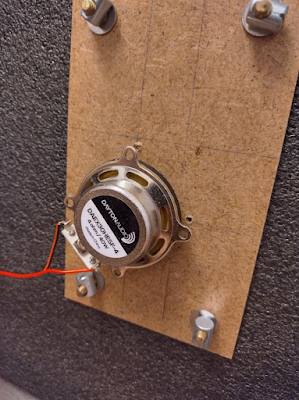Amplifier Bridge-Tied Load (BTL) and how 100 W plus 100 W equals 400 W
Bridging stereo amplifiers and having them quadruple their power was a cloudy topic for me for a long time. Then I finally understood how it's possible for a, say, 100 Watt amplifier to use two channel and produce four times the power instead of two. I will now explain it briefly and simply, so that anyone can understand what's going on. This article assumes that the reader is familiar with bridge-tied load (BTL) configured amplifier, even if not fully understanding the mechanics.
This concept is tied to some basics in electricity. Most of us are familiar with Ohms law, even though we would not have used it before. The law states that a device (i.e. speaker) that loads a power source (i.e. amplifier), draws power only as much as the loading resistance or impedance allows. The the amplifier produces voltage and the higher the resistance of the speaker is, the less current is allowed to flow and less power is used. Resistance strangles the current flow in a sense.
So when you bridge an amplifier, you double it's voltage generation into the load, so that doubles the power. But even though you are using the same speakers, the load that the amplifier "sees" is halved and that doubles the amount of current that can flow through giving us another doubling of power. This will gives us 100 W x 2 x 2 = 400 W. But that's not all there is to it.
If it was this simple, all manufacturers would just make their amplifiers internally BTL. Like, why would you build a 400 Watt amplifier when you can have the same power with the cost of just two 100 Watt amplifiers? Amplifier power specifications are always load dependent. If you have a 100 Watt amplifier, somewhere in the spec sheet it will (hopefully) say into which load(s) that applies. It's usually into 4 or 8 Ohms. Aside that, there can be different power ratings for different loads, that's normal and in-line with what we know about Ohms law. There's also most likely a mention about the minimum load that the amplifier can drive, even if not with full power. So what would happen if you run a low impedance speaker, like 4 Ohms or less, with BTL amplifier?
The apparent load to the amplifier is halved, so 4 Ohm speaker turns into a 2 Ohms and that's quite a low impedance for a speaker. With such low resistance current will flow in great quantity. Not all amplifiers are built to handle such high current throughput and that may cause the amplifier to engage protection mode or overheat and eventually die. If your stereo amplifier is rated for 100 Watts into 4 Ohms, its inner circuitry and power supply is built to handle that, but most likely is not able to support 2 Ohm loads with high output for extended duration.
If you had a medium or high impedance speaker, like 8 or 16 Ohms respectively, you would get quadruple power. This is because 8 Ohms and higher is considered an easy load to amplifiers and running them with BTL is usually safe. Running an amplifier specified for 100 Watts into 4 Ohms will output only 50 Watts into 8 Ohms, because the resistance is twice as high (unless the spec sheet tells otherwise). It's important to realize, that this 50 Watts is your starting point with the 8 Ohm speaker. If you quadruple that, you get 200 Watts and as a happy coincident, that equals 100 Watts + 100 Watts and will not exceed that Wattage that the amplifier was built for.
So that's about it. Always remember that Watts are Watts, you can't cheat them. But you also need to be aware of how many you are actually using and what the small print in the amplifiers manual has to say about that.

Comments
Post a Comment